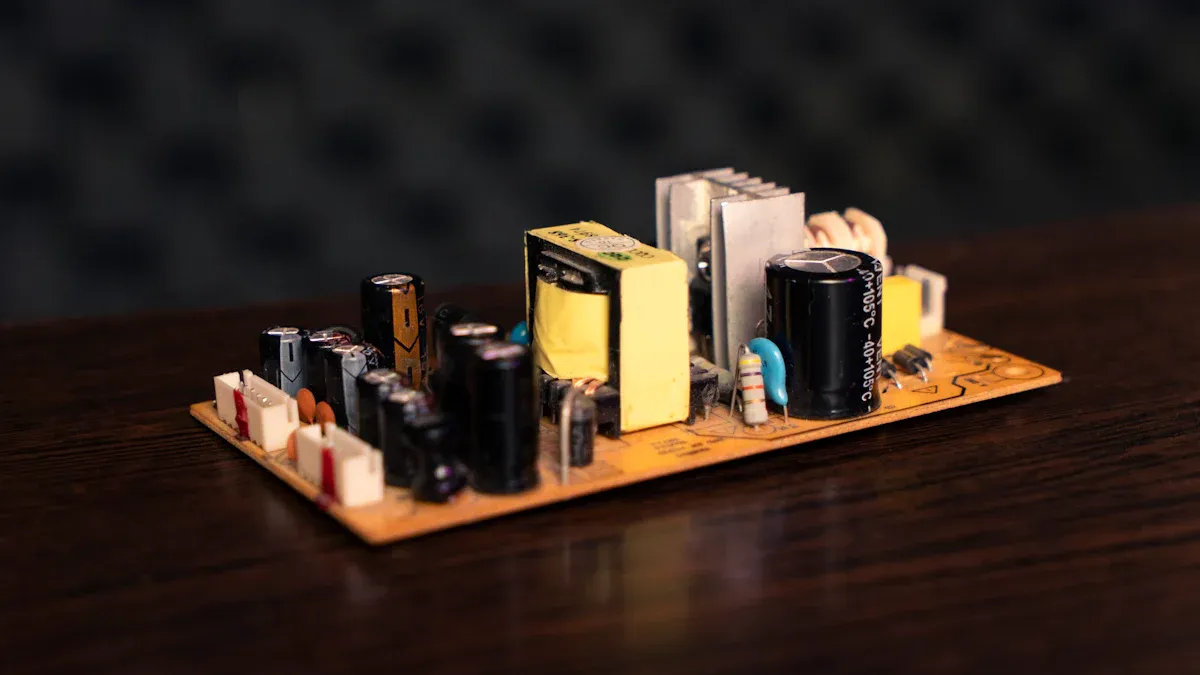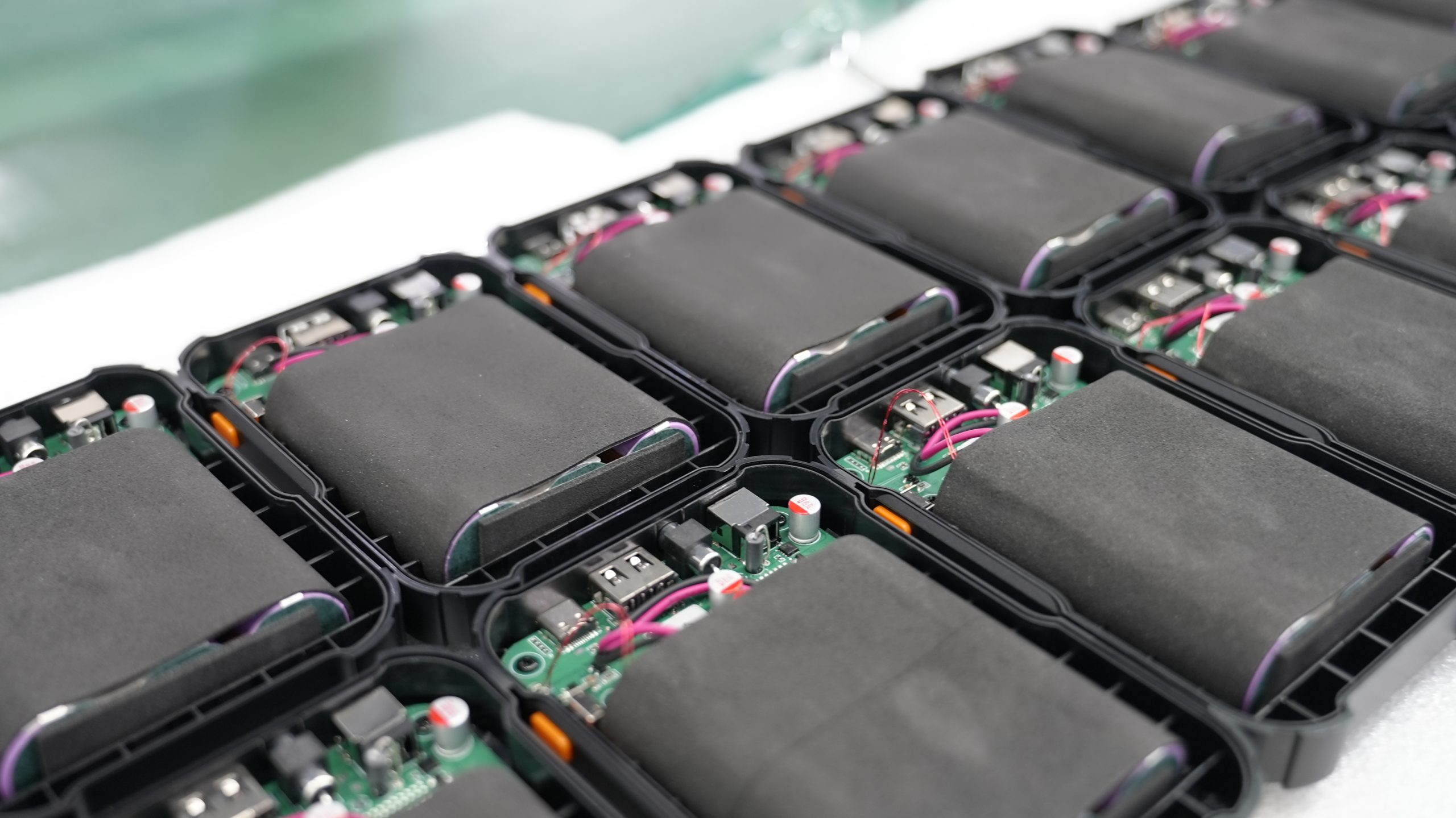
Minimizing downtime in robotics keeps your production predictable and efficient. You can maximize continuous operation time by adopting advanced battery packs and integrating smart monitoring systems. Downtime often causes unplanned stops and lost productivity.
Factories may lose 5–20% of productivity due to robot downtime.
Delays in technician response or parts delivery increase these losses.
Integrated solutions help you reduce these risks, making your operations more reliable and cost-effective.
Key Takeaways
Minimize downtime by adopting predictive maintenance. This strategy helps you identify issues before they cause failures, keeping your robots operational.
Use advanced lithium battery packs like LiFePO4 and NMC. These batteries provide high energy density and long cycle life, allowing robots to work longer without frequent recharging.
Implement smart charging systems to optimize battery health. These systems use AI to manage charging cycles, reducing downtime and maintenance needs.
Integrate energy harvesting methods to extend operation time. Capture energy from the environment to reduce reliance on external charging and enhance robot efficiency.
Adopt modular repairs for quick fixes. This design allows you to replace faulty parts easily, minimizing downtime and maintaining productivity.
Part 1: Power Management

Maximizing continuous operation time in robotics depends on how you manage power. You need to select the right battery technology, harvest energy from the environment, and use smart charging systems. These strategies help you boost operational efficiency and support automation in demanding environments.
1.1 Lithium Battery Packs
Lithium battery packs have become the backbone of modern robotics. You benefit from their high energy density, lightweight design, and long cycle life. These features allow your robots to work longer between charges and reduce maintenance needs. The medical battery market is growing at a CAGR of 6.48%, and infrastructure industries are also adopting advanced lithium battery packs for better performance.
Here is a comparison of common lithium battery chemistries used in robotics:
Chemistry | Platform Voltage (V) | Energy Density (Wh/kg) | Cycle Life (cycles) | Key Features |
|---|---|---|---|---|
LiFePO4 | 3.2 | 90–160 | 2000–7000 | High safety, long life |
NMC | 3.7 | 150–220 | 1000–2000 | High energy, balanced performance |
LCO | 3.7 | 150–200 | 500–1000 | High energy, shorter cycle life |
LMO | 3.7 | 100–150 | 300–700 | Moderate energy, good safety |
LTO | 2.4 | 70–110 | 7000–20000 | Ultra-long life, fast charging |
Tip: For more on sustainability in battery sourcing, see Our Approach to Sustainability. To ensure ethical supply chains, review the Conflict Minerals Statement.
Recent advancements in lithium battery packs include:
High energy density for sustained robot operation.
Lightweight designs that improve movement and flexibility.
Fast charging capability to reduce downtime.
Long cycle life for stable, long-term use.
Enhanced safety with solid-state battery research.
Environmental adaptability for extreme conditions.
Intelligent Battery Management Systems (BMS) for real-time monitoring and optimization.
By 2030, battery density could reach 600–800 Wh/kg, and costs may drop to $32–$54 per kWh. These improvements will make robotics more efficient and scalable.
Lithium-ion batteries offer about 150–200 Wh/kg, much higher than other battery types. They can handle over 1,000 charge cycles while keeping most of their capacity. This makes them ideal for industrial robots that require long, uninterrupted service.
1.2 Energy Harvesting
You can extend robot operation by integrating energy harvesting methods. These systems capture energy from the environment, reducing your reliance on external charging and increasing uptime.
Common energy harvesting methods include:
Photovoltaic: Converts sunlight into electricity, perfect for outdoor robots.
Piezoelectric: Generates power from mechanical stress, useful in dynamic settings.
Electromagnetic: Harnesses changing magnetic fields, suitable for various robotic systems.
Thermoelectric: Produces energy from temperature differences, ideal for robots in thermal gradients.
Triboelectric: Collects energy from motion, great for wearable or mobile robots.
Energy harvesting lets you tap into ambient vibrations and motions. This approach extends the operational lifespan of your robots and supports energy-autonomous systems. You can also combine multiple harvesting technologies in hybrid power systems for greater reliability.
Note: Self-powered sensors and energy-autonomous robots are now possible thanks to these innovations. This reduces maintenance and supports continuous operation time in remote or hard-to-reach locations.
1.3 Smart Charging
Smart charging systems help you optimize battery lifespan and minimize downtime. Modern charging stations use AI to coordinate fleet operations, communicate performance data, and predict maintenance needs. This keeps your robots ready for action and reduces manual intervention.
Key features of smart charging systems:
Feature | Description |
|---|---|
Power Supply | Delivers energy to recharge robot batteries efficiently. |
Battery Monitoring & Management | Tracks battery health for optimal charging cycles. |
Smart Energy Optimization | Prevents overcharging, overheating, and power loss. |
Optimized Battery Life | Intelligent algorithms extend battery lifespan. |
You can deploy IP67-rated outdoor charging stations for autonomous delivery robots. These stations offer safety, environmental protection, and operational intelligence. Smart charging algorithms prevent overcharging and overheating, which helps you reduce charging downtime and maintenance costs.
Tip: Integrating smart charging with your automation systems ensures your robots stay operational and productive, even in challenging environments.
Part 2: Reducing Downtime
Reducing downtime is essential for maximizing continuous operation time in robotics. You can achieve this by adopting predictive maintenance, modular repairs, and remote monitoring. These strategies help you maintain high productivity and operational efficiency in manufacturing and other industries.
2.1 Predictive Maintenance
Predictive maintenance transforms your approach to robotics maintenance. You use continuous monitoring to track the health of robotic systems and forecast failures before they cause unplanned downtimes. This maintenance strategy relies on advanced technologies that analyze data and provide actionable insights.
You can implement predictive maintenance using the following tools:
Condition monitoring sensors track vibration, temperature, and pressure. These sensors detect early signs of wear or malfunction.
Advanced analytics, machine learning, and AI analyze sensor data. These technologies identify patterns and predict when maintenance is needed.
Augmented reality (AR) gives technicians real-time data and repair recommendations during inspection and servicing.
Cloud computing provides scalable storage and processing for large datasets.
IoT enables real-time data transmission and remote monitoring of robot health.
Digital twins simulate robot behavior. You can test maintenance strategies and optimize predictive models.
When you use predictive maintenance, you see measurable results:
Companies report an average reduction of 60% in equipment downtime.
Maintenance planning time drops by nearly 40%.
Downtime is 18.5% lower, defects are 87.3% lower, and inventory losses are 22.5% lower.
AI and IoT forecast failures, reducing downtime and improving workflow efficiency.
You improve process optimization and keep autonomous robots running longer. Predictive maintenance helps you avoid costly repairs and maintain continuous operation time.
Tip: You can schedule maintenance before failures occur. This keeps your robotic systems productive and reduces the risk of unplanned downtimes.
2.2 Modular Repairs
Modular repairs allow you to fix robots quickly and efficiently. You design robotic systems with interchangeable modules, so you can replace faulty parts without lengthy downtime. This approach streamlines robotics maintenance and supports continuous operation.
Common modular components include:
Cubic modules: Used in manufacturing and assembly for easy replacement.
Cylindrical modules: Used in space exploration and search and rescue.
Lattice modules: Provide flexibility in exploration and rescue missions.
Physical connectors: Pins or bolts offer reliable connections but need regular maintenance.
Magnetic connectors: Magnets allow easy connections but require precise alignment.
Electrical connectors: Fast connections using electrical signals, though they need complex control systems.
You benefit from modular repairs because you reduce downtime and improve productivity. You can swap out damaged modules during inspection, keeping your robots operational. This strategy supports process optimization and helps you maintain high performance in demanding environments.
Note: Modular design also enables remote diagnostics. You can identify faulty modules and plan repairs before sending technicians onsite.
2.3 Remote Monitoring
Remote monitoring gives you real-time visibility into your robotic systems. You use continuous monitoring sensors to track vibration, temperature, and pressure. These sensors help you detect faults early and schedule maintenance before problems escalate.
Advanced analytics process sensor data and identify patterns. IoT infrastructure enables real-time data transmission, so you receive immediate alerts when anomalies occur. This proactive approach minimizes downtime and supports operational efficiency.
Here are key features of effective remote monitoring systems for industrial robots:
Key Feature | Description |
|---|---|
Real-time performance tracking | You monitor machine performance continuously and respond to issues immediately. |
Predictive maintenance | Data analytics forecast equipment failures, allowing you to schedule maintenance and reduce downtime. |
Operational efficiency | Proactive monitoring minimizes maintenance costs and maximizes uptime. |
Safety enhancements | Technology improves workplace safety and ensures a secure environment for operators. |
You use remote monitoring to support robotics maintenance and inspection. This strategy helps you maintain continuous operation time and avoid unplanned downtimes. You keep your robots productive and ensure process optimization across your operations.
Tip: Remote monitoring systems help you manage large fleets of autonomous robots. You can track performance, schedule predictive maintenance, and maintain high productivity.
Part 3: Hardware Optimization

3.1 Lightweight Materials
You can boost your robots’ performance by choosing lightweight materials. These materials help reduce the energy needed for movement, which leads to longer working hours and less frequent charging. The table below shows some of the most common lightweight materials used in robotics and their benefits:
Material | Properties | Applications in Robotics |
|---|---|---|
Titanium Alloys | High strength-to-weight ratio, corrosion resistance | Durable, agile components |
Carbon Fiber Composites | High tensile strength, lightweight, vibration damping | Robotic limbs, frames for speed and efficiency |
Aluminum | Low density, malleable, strong | Lightweight structures in many sectors |
Magnesium Alloys | Lightweight, maintains strength | Critical for energy-efficient designs |
When you use these materials, you improve energy utilization efficiency and conversion efficiency. This means your robots can do more work with less power, which supports continuous operation time and lowers costs.
3.2 Efficient Actuators
Actuators move your robots’ joints and limbs. New designs now use IoT integration, feedback sensors, and miniaturization. Some electric actuators reach up to 90% efficiency. You can choose from several advanced options:
Soft robotics actuators for flexible, delicate tasks
Bio-inspired actuators that mimic natural movement
Shape-memory alloys and piezoelectric materials for better performance
AI-driven actuators for real-time adjustments and predictive maintenance
Spring-assisted actuators use less energy than traditional motors. For example, the bipedal robot Cassie walks at 1.0 m/s using only 200 Watts. These innovations help you increase operational efficiency and extend your robots’ working time.
3.3 Thermal Management
Overheating can shorten your robots’ lifespan and cause failures. You can prevent this by using several thermal management techniques:
Use thermal interface materials for better heat transfer
Design ducts and vents for optimal airflow
Install sensors for real-time temperature monitoring
Connect cooling systems to robot controls for fast response
Optimize PCB layouts and add heat sinks to spread and remove heat
Good thermal management reduces failure rates by up to 50% in hot environments. It also extends component lifespan, keeps performance stable, and prevents thermal throttling during heavy workloads. This ensures your robotics systems stay reliable and productive.
Part 4: Software & Control
4.1 Energy-Efficient Algorithms
You can extend your robots’ working hours by using energy-efficient algorithms. These algorithms help you optimize power consumption and reduce unnecessary processing. The table below shows some of the most effective techniques:
Algorithm/Technique | Description |
|---|---|
Approximate computing | Trades off precision for energy savings in non-critical calculations. |
Anytime algorithms | Provides usable results with varying computational resources. |
Bio-inspired optimization algorithms | Uses genetic algorithms and particle swarm to solve complex problems efficiently. |
Energy-aware path planning | Minimizes energy use during robot navigation. |
Dynamic voltage and frequency scaling (DVFS) | Adapts processor performance to workload. |
Real-time scheduling algorithms | Balances task deadlines with energy constraints. |
Workload consolidation | Minimizes idle time and maximizes energy-efficient states. |
Energy-aware load balancing | Distributes tasks across processors for optimal efficiency. |
You can combine these methods with a battery management system for even better results.
4.2 Autonomous Scheduling
Autonomous scheduling lets your robots plan tasks and charging cycles without human input. You use software to assign jobs based on priority and available resources. This approach helps you avoid idle time and keeps your robots working efficiently. You can also use real-time scheduling algorithms to balance energy use and task deadlines. This strategy supports continuous operation time and reduces manual oversight.
Tip: Automated scheduling systems can adapt to changes in workload, which helps you maintain productivity even during peak hours.
4.3 Bottleneck Identification
You can improve workflow by identifying and resolving bottlenecks in your robotics operations. Start by documenting each process step with flowcharts or Kanban boards. Use value-stream mapping to track work and spot delays.
Track wait times to find where delays occur.
Monitor backlog volume for signs of excessive workload.
Measure throughput to assess how efficiently your robots process tasks.
Next, analyze performance data and gather feedback from your team. Conduct a thorough workflow diagnosis to find root causes. Once you identify bottlenecks, you can reassign tasks, automate manual steps, or extend operation timelines to keep your robots running smoothly.
4.4 Deep Reinforcement Learning
Deep reinforcement learning (DRL) gives your robots the ability to learn and adapt over time. You can use DRL to optimize control strategies and maximize uptime. Recent advances show that tuning hyperparameters with tree-structured Parzen estimators (TPE) can improve learning efficiency. For example, the Proximal Policy Optimization (PPO) algorithm reached 95% of maximum reward 76% faster with TPE and needed about 40,630 fewer training episodes.
You benefit from DRL by enabling continual learning and time-optimal motion planning. This approach helps your robots adapt to new environments and maintain high performance, which is essential for long-term productivity in robotics.
Part 5: Robotics Applications
5.1 Industrial Robots
You can see continuous operation time as a key driver of efficiency in manufacturing. Industrial robots often work in assembly lines, welding, and material handling. You improve productivity by using lithium battery packs like LiFePO4 and NMC, which offer high energy density and long cycle life. Many factories use predictive maintenance and modular repairs to keep robots running with minimal downtime. For example, automotive plants use modular end-effectors to swap out tools quickly, reducing idle time. You also benefit from automation technologies that schedule tasks and charging cycles, ensuring robots stay active and efficient.
5.2 Service Robots
Service robots support logistics, healthcare, and security. You maximize efficiency by reducing unnecessary movements and optimizing scheduling. Here are some proven strategies:
Remove extra steps in robot routes to save energy.
Release unused time blocks to improve scheduling.
Use AI to assign tasks and avoid idle robots.
Test robot programs in simulation before real deployment.
Update robot software offline to reduce downtime.
Apply dynamic automation to adapt to changing needs.
Hospitals use service robots powered by NMC or LTO batteries for medicine delivery and disinfection. These robots rely on efficient scheduling and energy management to maintain continuous operations. Security robots in infrastructure settings use remote monitoring and predictive maintenance to stay online longer.
5.3 Autonomous Vehicles
Autonomous vehicles, such as AGVs and delivery robots, depend on advanced battery chemistries and smart management systems. You can review the table below for key requirements and innovations:
Requirement/Innovation | Description |
|---|---|
High Energy Density | Batteries like NMC and lithium-sulfur provide long-lasting power for extended routes. |
Durability and Longevity | Robust batteries reduce maintenance and support continuous operation. |
Fast Charging Capabilities | Solid-state batteries enable quick recharging, minimizing downtime. |
Thermal Management | Cooling systems prevent overheating during heavy use. |
Safety and Reliability | Battery management systems monitor health and ensure safe operation. |
Wireless Charging | Enables charging without physical connectors, supporting automation. |
Energy Recovery Systems | Capture energy during braking to boost efficiency. |
AGVs in warehouses use these technologies to maintain high efficiency and reduce downtime. You achieve better productivity and lower costs by integrating battery management into vehicle scheduling.
You can extend continuous operation time in robotics by focusing on lithium battery packs like LiFePO4 and NMC, predictive maintenance, and software optimization. When you implement robotics maintenance strategies such as predictive maintenance and modular repairs, you reduce downtime and boost efficiency. The table below shows how leading organizations use predictive maintenance to improve efficiency and reduce downtime:
Organization | Strategy | Outcome |
|---|---|---|
GE | Implemented Predix AI platform for predictive maintenance | Reduced downtime by 20%, extended equipment life, and reduced maintenance costs significantly. |
GM | Used AI-based predictive maintenance with real-time sensor data | Predicted over 70% of equipment failures a day in advance, optimizing technician labor and extending asset durability. |
You will see future trends in robotics maintenance that include AI integration, collaborative robots, and autonomous mobile robots. These innovations will drive efficiency and reduce downtime. You should explore expert consultation and further research to optimize robotics maintenance and maximize efficiency.
FAQ
What lithium battery chemistry works best for industrial robots?
You should consider LiFePO4 and NMC batteries. LiFePO4 offers high safety and long life. NMC provides high energy density and balanced performance. Both support long operation times and reduce maintenance needs.
How does predictive maintenance reduce downtime?
You use predictive maintenance to monitor robot health in real time. This approach helps you spot issues early. You can schedule repairs before failures happen. This keeps your robots running and lowers unexpected downtime.
Can energy harvesting fully power autonomous robots?
You can use energy harvesting to extend operation time. However, most robots still need primary batteries like NMC or LiFePO4. Energy harvesting works best as a supplement, not a full replacement, for continuous industrial use.
What is the role of smart charging in robot fleets?
You rely on smart charging to manage charging cycles and battery health. Smart charging stations use AI to schedule charging, prevent overcharging, and reduce manual checks. This keeps your robot fleet ready for continuous operation.




